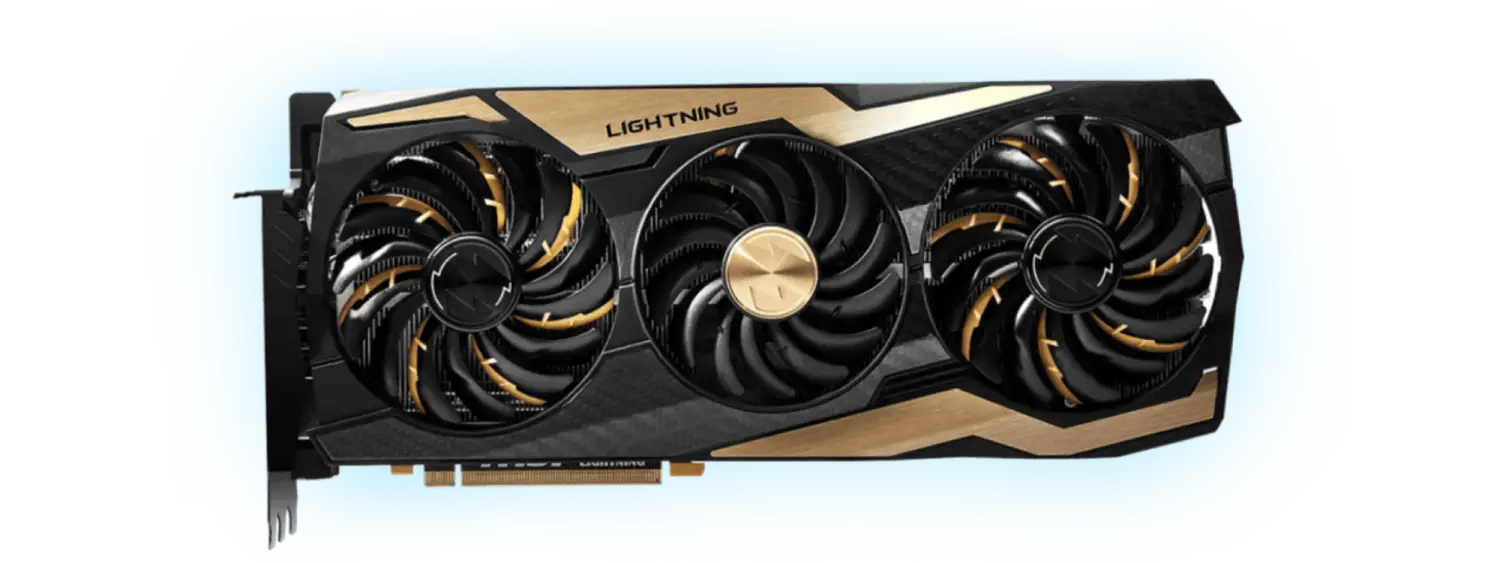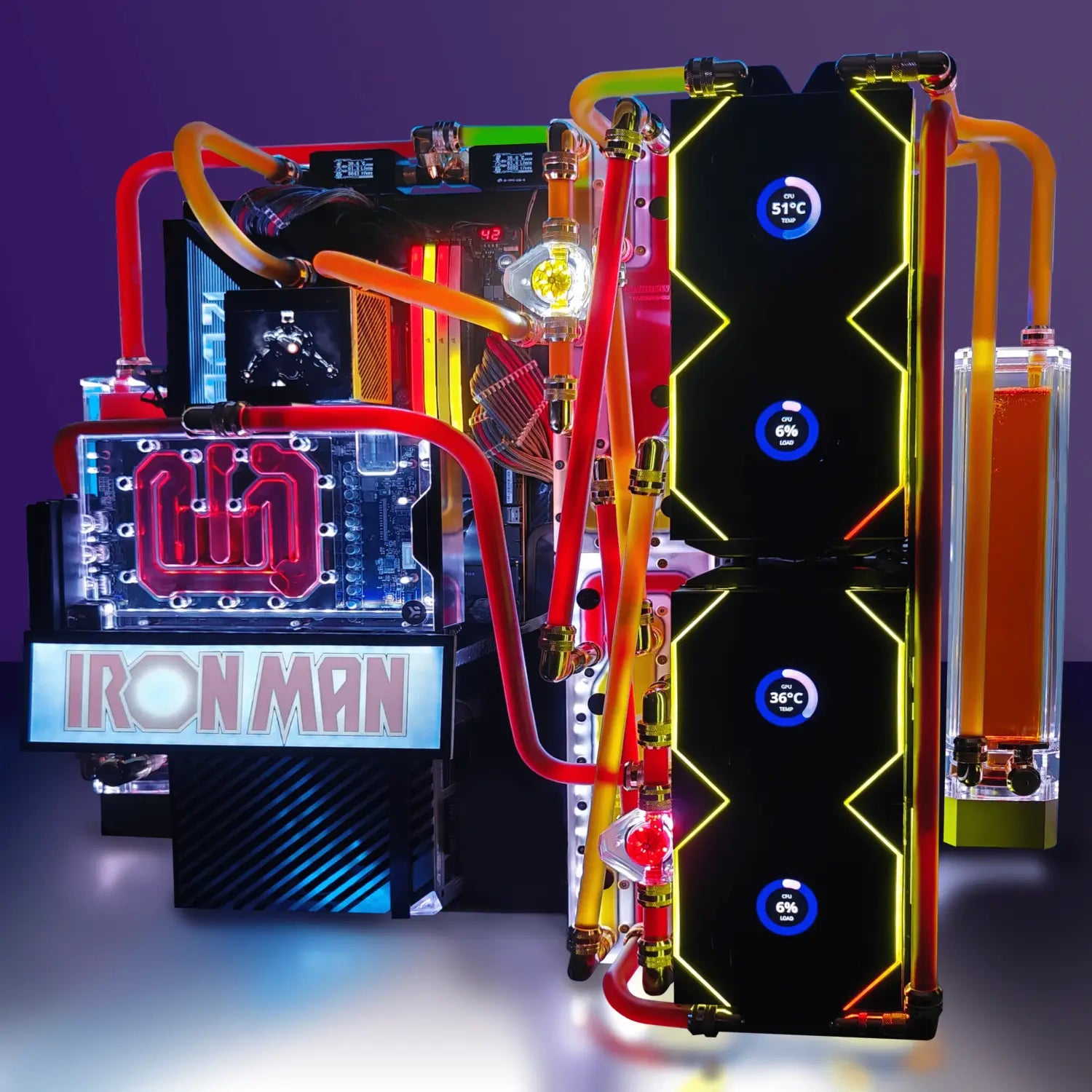
The Evolution of Multi GPU Technology
Share
In the ever-evolving world of computer hardware, the concept of multi-GPU technology has become increasingly prominent, offering gamers, content creators, and professionals alike a path to unlock unprecedented levels of performance. As the demand for high-resolution gaming, complex 3D rendering, and advanced AI workloads continues to grow, the need for efficient and scalable graphics processing solutions has become paramount.
In this comprehensive guide, we will delve into the intricacies of multi-GPU technology, exploring its history, the various implementations, and the advantages and limitations that come with this powerful computing approach. Whether you're a seasoned enthusiast or a newcomer to the world of high-performance computing, this article will provide you with a deep understanding of the inner workings of multi-GPU setups and how they can revolutionize your computing experience.

The Evolution of Multi-GPU Technology
The concept of multiple graphics processing units (GPUs) to enhance overall system performance has been around for decades. Its origins even trace back to the early days of the personal computer revolution. As the demand for more powerful graphics grew, manufacturers began exploring ways to leverage the parallel processing capabilities of multiple GPUs. This was in attempt to tackle increasingly complex computational tasks.
One of the earliest and most well-known implementations of multi-GPU technology was NVIDIA's Scalable Link Interface (SLI), which debuted in the early 2000s. SLI allowed users to combine two or more compatible NVIDIA graphics cards to achieve a significant boost in gaming performance and visual fidelity. This technology was quickly adopted by enthusiasts and gamers alike, who sought to push the boundaries of what was possible with their desktop systems.
Around the same time, AMD introduced its own solution, known as CrossFire. While the underlying principles were similar to SLI, CrossFire offered an alternative approach that catered to a different segment of the market. As the years passed, both NVIDIA and AMD continued to refine and enhance their multi-GPU technologies, introducing new features and addressing the limitations of their earlier implementations.
Understanding the Types of Multi-GPU Technologies
In the modern computing landscape, there are several distinct technologies that users can leverage to boost their system's performance. Let's explore the most prominent ones:
NVIDIA SLI (Scalable Link Interface)
NVIDIA's SLI technology has been a staple in the world of high-performance gaming for over two decades. SLI enables a significant increase in graphics processing power, delivering a noticeable boost in frame rates and visual quality (especially in demanding 4K and high-refresh-rate gaming scenarios). This is done by allowing users to combine two or more compatible NVIDIA GeForce GPUs.
AMD CrossFire
As NVIDIA's primary competitor in the graphics card market, AMD introduced its own solution, known as CrossFire. Similar to SLI, CrossFire allows users to pair compatible Radeon GPUs to achieve enhanced graphics performance. While the underlying principles are comparable, CrossFire has evolved over the years to offer its own unique features and capabilities.
Modern Multi-GPU Technologies
In recent years, the landscape of multi-GPU technology has continued to evolve, with the introduction of more advanced solutions. One such example is NVIDIA's NVLink, a high-speed interconnect that enables seamless communication between multiple high-end GPUs, such as the Quadro RTX 6000 series. Additionally, the emergence of DirectML, a DirectX 12 feature, has opened up new possibilities for multi-GPU workloads, particularly in the realm of machine learning and AI-powered applications.
How Multi-GPU Setups Work
The core concept behind this technology is the ability to distribute the computational workload across multiple graphics processing units, effectively leveraging the parallel processing capabilities of these specialized hardware components. There are two primary methods by which multi-GPU setups achieve this:
1. Alternate Frame Rendering (AFR)
In an Alternate Frame Rendering (AFR) configuration, each GPU is responsible for rendering every other frame in a sequence, effectively doubling the overall frame rate. This approach is well-suited for gaming scenarios, as it can provide a significant boost in performance without introducing significant latency or input lag issues.
2. Split Frame Rendering (SFR)
Split Frame Rendering (SFR), on the other hand, involves dividing the rendering workload across multiple GPUs. With this setup, each GPU is responsible for rendering a specific portion of the frame. This approach can be beneficial for certain types of workloads, such as video editing or scientific simulations, where the computational load is more evenly distributed across the frame.
In addition to these traditional techniques, the introduction of Explicit Multi-GPU support in modern APIs like DirectX 12 and Vulkan has opened up new possibilities for developers to take full advantage of these GPU setups, allowing for more granular control and optimization of the rendering process.
Advantages of Multi-GPU Technology
The adoption of multi-GPU technology offers a wealth of benefits for users across a wide range of applications. Let's explore some of the key advantages:
Increased Graphics Performance
The primary advantage of this setup is the significant boost in graphics processing power. By combining the resources of multiple GPUs, users can achieve dramatically higher frame rates, improved visual quality, and the ability to tackle more demanding workloads, such as 4K gaming or complex 3D rendering tasks.
Enhanced VRAM Capacity
Another significant advantage of multi-GPU setups is the ability to pool the available video memory (VRAM) across the installed graphics cards. This VRAM pooling can be particularly beneficial for users working with large textures, high-resolution assets, or memory-intensive applications like video editing, 3D modeling, or scientific simulations.
Benefits for Non-Gaming Applications
While multi-GPU technology has traditionally been associated with gaming performance, its advantages extend far beyond the realm of gaming. Professionals in fields such as video editing, computer-aided design (CAD), artificial intelligence, and scientific computing can all benefit from the increased computational power and specialized hardware acceleration offered by multi-GPU setups.

Limitations and Disadvantages of Multi-GPU Technology
While the advantages of multi-GPU technology are undeniable, it's important to also consider the potential limitations and drawbacks that users may encounter:
Game Compatibility Issues
One of the primary challenges with multi-GPU setups is the issue of game compatibility. Not all games are optimized to take full advantage of multiple GPUs, and in some cases, the performance gains may be negligible or even detrimental, leading to issues like micro-stuttering or input lag.
Hardware Requirements
Implementing a multi-GPU setup requires a robust and compatible hardware ecosystem, including a high-end motherboard, a powerful power supply, and efficient cooling solutions. These additional hardware requirements can significantly increase the overall cost and complexity of the system.
Power Consumption and Heat Generation
The use of multiple high-performance GPUs can also lead to increased power consumption and heat generation. This raises the concern for system stability, noise levels, and the need for more advanced cooling solutions, such as liquid cooling systems.
Hardware Considerations for Multi-GPU Setups
When building this system, there are several key hardware components that require careful consideration:
Motherboard Requirements
The motherboard plays a crucial role in a multi-GPU setup, as it must provide the necessary PCIe slots and support for the specific technology being used (e.g., SLI or CrossFire). Ensuring compatibility between the motherboard and the graphics cards is essential for optimal performance and stability.
Power Supply Needs
Powering a multi-GPU system can be a significant challenge, as the increased power draw of multiple high-end graphics cards can quickly exceed the capabilities of a standard power supply. Selecting a high-wattage, high-quality power supply is crucial to ensure stable and reliable system operation.
Cooling Solutions
The increased heat generation from multiple GPUs can be a significant challenge, requiring robust cooling solutions to maintain optimal operating temperatures and prevent thermal throttling. Both air-based and liquid-based cooling systems may be necessary to effectively dissipate the heat generated by a multi-GPU setup.
Benchmarking Multi-GPU Setups
Evaluating the performance of a multi-GPU system is a crucial step in ensuring that the setup is delivering the expected level of performance. There are several popular benchmarking tools and techniques that users can employ to assess the capabilities of their GPU configurations:
Popular Benchmarking Tools
Some of the most widely used benchmarking tools for Graphics include 3DMark, Unigine Heaven, and Unigine Superposition. These tools provide a comprehensive suite of tests that can measure various aspects of graphics performance, including frame rates, rendering quality, and overall system stability.
Frame Pacing Adjustments
In addition to raw performance metrics, users should also pay attention to frame pacing, which can be a critical factor in ensuring a smooth and consistent gaming experience. Tools like NVIDIA's Frame Capture Analysis Tool (FCAT) and AMD's Radeon GPU Profiler can help users identify and address any frame pacing issues that may arise in their multi-GPU setups.
The Future of Multi-GPU Technology
As the demand for ever-increasing computational power continues to grow, the future of multi-GPU technology looks bright. Manufacturers are constantly exploring new ways to improve the efficiency, scalability, and compatibility of these multi-GPU solutions.
Some of the current trends and potential developments in the world of multi-GPU technology include:
- Continued advancements in high-speed interconnects, such as NVIDIA's NVLink, to facilitate more seamless communication between multiple GPUs.
- Increased adoption of Explicit Multi-GPU support in modern APIs like DirectX 12 and Vulkan, allowing for more granular control and optimization of multi-GPU workloads.
- Emerging technologies like DirectML, which leverage the parallel processing capabilities of multiple GPUs for machine learning and AI-powered applications.
- Potential breakthroughs in power efficiency and thermal management, enabling more compact and energy-efficient multi-GPU systems.
As the industry continues to innovate and push the boundaries of what's possible, the future of multi-GPU technology holds the promise of even more impressive performance gains, expanded use cases, and a more seamless user experience for both gamers and professionals alike.
Conclusion
In the ever-evolving world of computer hardware, multi-GPU technology has emerged as a powerful solution for users seeking to unlock unprecedented levels of graphics processing power. From the early days of SLI and CrossFire to the more advanced modern implementations, the landscape of multi-GPU technology has continued to evolve, offering users a wide range of benefits and capabilities.
Whether you're a passionate gamer, a content creator, or a professional working in fields like AI or scientific computing, understanding the intricacies of multi-GPU technology can be a game-changer. By leveraging the parallel processing capabilities of multiple GPUs, you can achieve significant performance gains, enhanced visual quality, and the ability to tackle increasingly complex computational tasks.
As the industry continues to push the boundaries of what's possible, the future of multi-GPU technology looks brighter than ever. With ongoing advancements in hardware, software, and interconnect technologies, the potential for even more impressive performance and capabilities is on the horizon. By staying informed and embracing the power of multi-GPU setups, you can position yourself at the forefront of the computing revolution and unlock a world of new possibilities.
